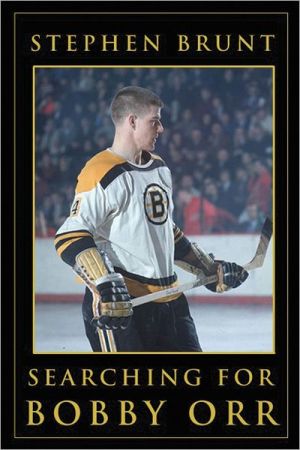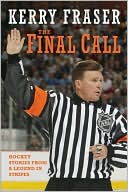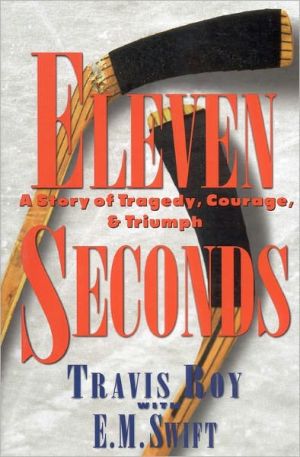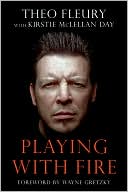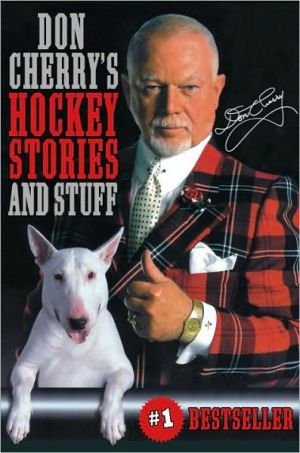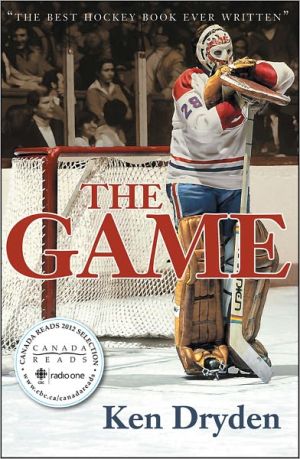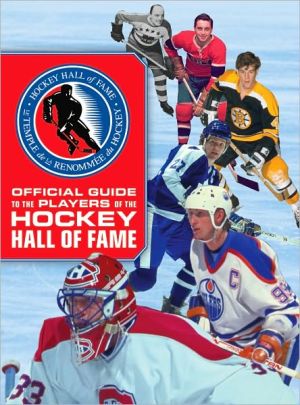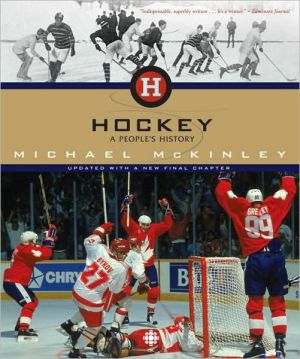Searching for Bobby Orr
The book that hockey fans have been waiting for: the definitive, unauthorized account of the man many say was the greatest player the game has ever seen.\ The legend of Bobby Orr is one of the most enduring in sport. Even those who have never played the game of hockey know that the myth surrounding Canada’s great pastime originates in places like Bobby Orr’s Parry Sound. In the glory years of the Original Six – an era when the majority of NHLers were Canadian – hockey players seemed to emerge...
Search in google:
The book that hockey fans have been waiting for: the definitive, unauthorized account of the man many say was the greatest player the game has ever seen.The legend of Bobby Orr is one of the most enduring in sport. Even those who have never played the game of hockey know that the myth surrounding Canada’s great pastime originates in places like Bobby Orr’s Parry Sound. In the glory years of the Original Six – an era when the majority of NHLers were Canadian – hockey players seemed to emerge fully formed from our frozen rivers and backyard rinks, to have found the source of their genius somehow in the landscape. Like Mozart, they just appeared – Howie Morenz, Gordie Howe, Maurice Richard and Bobby Orr – spun out of the elements, prodigies, geniuses, originals, to stoke the fantasy of a nation united around a puck.Bobby Orr redefined the defensive style of hockey; there was nothing like it before him. He was the first to infuse the defenseman position with offensive juice, driving up the ice, setting up players and scoring some goals of his own. He was the first player to win three straight MVP awards, the first defenseman to score twenty or more goals in a season. His most famous goal won the Boston Bruins the Stanley Cup in 1970 – for the first time in twenty-nine years – against the St. Louis Blues in overtime. But history will also remember Bobby Orr as a key figure in the Alan Eagleson scandal, and as the unfortunate player forced into early retirement in 1978 because of his injuries. His is a story of dramatic highs and lows.In Searching for Bobby Orr, Canada’s foremost sportswriter gives us a compelling and graceful look at the life and times of Bobby Orr that is also a revealing portrait of a game and a country in transition.So Bobby Orr could skate, he could stickhandle, he could fight when he had to. He could shoot without looking at the net, without tipping a goaltender as to what was coming. His slapshot came without a big windup, and was deadly accurate. Skating backwards, defending, he was all but unbeatable one on one. He could poke check the puck away, or muscle a forward into the boards. In front of his own net, stronger on his feet than his skinny frame would suggest, he wouldn’t be moved. But there was more…–from Searching for Bobby Orr
Chapter One\ Parry Sound\ On the river, he could skate forever. No barrier but the banks and the horizon, the ice stretching far out into the bay. Soon enough, the cold seemed to disappear, even for the boy who always insisted on lacing up barefoot – it just felt better, more natural, that way. Take the puck, and try to hold it. Keep away. Offer it up, then pull it back, tuck it behind the blade, make it disappear. Sleight of hand, sleight of feet. Learn to keep your head up, your eyes forward, feel the puck on your stick, don’t look down. Speed up, change direction, the motion natural, deceptive, economical, graceful. No churning legs or laboured strides, even on beat-up, second-hand skates. He is smaller than the rest, a skinny kid, scrawny, no meat on his bones at all. But they can’t get near him, even though it looks as if he isn’t working hard, as if he is shifting through the gears in automatic – one speed, then another, then another. Size and muscle are of no use, without corners, without ends, without limits. There are no coaches standing by, waiting to impose their will. No parents shouting at the side. No drills, no repetition, but rather every rush is an improvisation, a jazz solo, a flight of the imagination. And when the boy is clear of them all, or alone by choice, when all he faces is open ice, the other sounds of his world disappear, the intermittent hum of small-town traffic, the rumble of distant factories, the angry shouts at home. Just the scrape and gouge of metal on ice, the rhythmic tap of rubber on wood, on, on forever. Pick a direction and keep on going, and eventually there’s no one in the way.\ Why people settled here is no mystery, though in the middle of many a brutal winter they must have wondered. Parry Sound, Ontario, stands by a natural harbour on a deep, cold, dangerous lake, a shelter for sailors on the shores of Georgian Bay at the mouth of the Seguin River. The earliest known residents were the Hurons, who fished and camped in summer before being driven out by the Iroquois, but surely there were others before them. “Shining Shore,” the Iroquois named it – Wausakwasene. When the Europeans arrived, those who passed by here were among the very first and most famous to set foot in what would become central Canada, traders and explorers and adventurers and sailors, Étienne Brulé and Samuel de Champlain, Robert de LaSalle sailing his Griffon, Alexander Henry, doomed Sir John Franklin. The place got its name, a tribute to the Arctic explorer Sir William Edward Parry, from an English surveyor, Capt. Henry Bagwell, charged by the Crown with the task of mapping Georgian Bay. Soon after arrived the lumbermen, to fell and exploit the endless forest. The first sawmill opened in 1857, and with it naturally came the town’s first industrialists. In 1897, a railway was cut through the forest, and within ten years the town was connected to the great transcontinental line, with a trestle constructed over the Seguin linking what would become known as Belevedere Hill and Tower Hill, an engineering marvel and local landmark, the longest east of the Rockies. Industries would come and go, and from the moment the countryside became accessible, tourists began to arrive, marking Parry Sound forever. Here was the wilderness within easy reach of the big cities, the Great North Woods, though not really so far north at all, not far past the point of demarcation where the flat agricultural plain of Southern Ontario gives way to the rocks and trees of the Canadian Shield. Even Teddy Roosevelt, that connoisseur of the exotic, dropped by in 1908 to sample the accessible wilderness. He was just one in a long, unbroken line of “summer people” stretching back more than a century who became one-half of the town’s great divide. The other half, the full-timers, scratched out a living, survived the dark winters and then watched their town come alive with cottagers and vacationers during the long days and brief weeks of summer. The visitors had money and leisure time, and inevitably it was their business, and not the resources, not the factories, that provided the town’s economic pulse.\ The only fundamental difference between Parry Sound now and the town in the 1960s, the 1950s and before is a diminished sense of isolation. Then the great urban mass along the shore of Lake Ontario, the most densely populated place in Canada, was a half-day’s train journey away, or a three- or four-hour drive on lousy roads. It is half that now, not quite commuting distance, but not far off, and on this ever-shrinking planet, no one could disappear here, no great talent could be hidden away, and no one could feel that they were out in the bush alone. Eventually, the line of development creeping north from Toronto might reach this far. Eventually, Parry Sound might not feel like such a separate, different place. As of now, though, it retains its unique identity; it is still “Parry Hoot” (the old nickname left over from a wilder past for the part of the town that wasn’t dry) and always – as the big sign out on the highway has proclaimed for more than thirty years – The Home of Bobby Orr.\ “I may change my thinking a bit later in life, but right now my idea of the good life is to make my home in Parry Sound and raise a family here,” Bobby said to an interviewer early in his NHL career – though of course he was speaking in the fairy-tale language of the sports hero, though of course it wouldn’t quite work out that way. “I like the slow pace of life up here and I like the outdoors. I don’t really like the big cities – with all the people rushing around. Some people thrive on it, but it isn’t my idea of living. The life in Parry Sound represents Canada to me. What goes on in [Boston] is more American. It is all right if you like it but it’s not for me.
